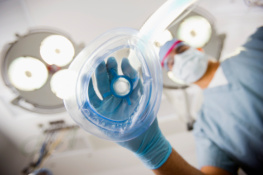Simple Steps Can Cut Errors in the Operating Room, Large Anesthesiology Practice Claims
23October2014
23October2014

The apparent success of a patient safety pilot program started two years at Piedmont Atlanta Hospital by American Anesthesiology is leading to the program’s expansion.
American Anesthesiology, a division of the national medical group MEDNAX that operates 29 practices in 13 states, plans to roll out its Patient Safety Initiative to a third of its offices by the year’s end. The goal of the program is to help the facilities become “high reliability organizations” (HROs).
“We believe anesthesiologists…are ideal for championing [a safety improvement program],” explained Dr. Katherine Grichnik, director of the Center for Research, Education and Quality for American Anesthesiology, according to an article in Becker’s Infection Control and Clinical Quality.
“If you think about the OR [operating room] environment, ensuring overall safe patient care is a key component of the anesthesiology team’s responsibility. Anesthesiologists are often the glue that bonds the patient care experience between what happens in the pre-op area, in the operating room, and in the post-operative care area,” Grichnik said.
Here are the steps being taken by American Anesthesiology to transform ORs into HROs:
A post-program site assessment is used to measure the initiative’s success. At one practice, positive answers to the question “How often is a potentially harmful mistake reported?” jumped from 30 percent in a pre-program survey to 66 percent in a post-program survey.
“We know we’re seeing more effective communication among providers,” Grichnik says.
Communication errors were cited as one of the major categories of preventable adverse events (PAEs) in a 2013 report that said medical errors are responsible for up to 400,000 deaths per year.
If you or a loved one suffered patient harm at a Washington state hospital, contact the Seattle medical malpractice lawyers at Morrow Kidman Tinker Macey-Cushman, PLLC, for a free consultation.